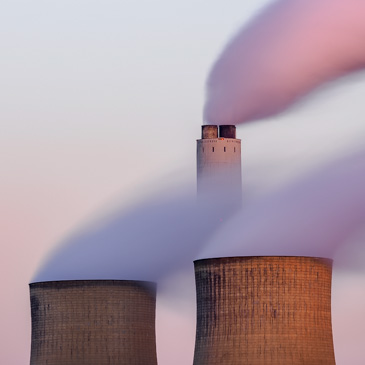Panorama Drama
I recently joined an online photography club. One of its assignments was to create landscape panoramas in the 6 x 17 aspect ratio in honour of the classic Fuji GX617 panoramic film camera.
I was intrigued by this assignment because I’ve struggled with creating effective panoramas in the past, especially super-wide ones like 6 x 17. So I grabbed my camera and headed out on a few trips to see if I could discover what really makes a good panoramic photograph.
Over the course of seven trips, I managed to create about 40 panoramas. Out of those, here are the 12 images I’m most pleased with.
Challenges in Visualising Wide Panoramas
Creating panoramas this wide is very different to traditional landscape photography. The first challenge is to simply visualise the final picture.
Birch Woodland
OM1 Mark II with Olympus 12-40mm lens at 25mm. 1/60s, f/4, ISO 200. Panorama created from 10 images stitched in Lightroom.

Since these panoramas are stitched together from multiple images – often 10 or more – you can’t pre-visualise the 6 x 17 view through the camera’s viewfinder. (Unless you have a Fuji GX617 panoramic film camera of course).
Morning Mist
OM1 Mark II with Olympus 12-40mm lens at 29mm. 1/250s, f/4, ISO 200. HDR panorama created from 30 images stitched in Lightroom.

Tools and Techniques for Better Composition
To help with this, I crafted a makeshift viewfinder out of cardboard. It was a simple cut-out I could hold up to the landscape to give me a sense of how to frame the scene.
Moorland Path
OM1 Mark II with Olympus 12-40mm lens at 29mm. 1/250s, f/4, ISO 200. HDR panorama created from 30 images stitched in Lightroom.

But I found this didn’t work. Not only did I feel a bit of a plonker holding a piece of cardboard in the middle of a forest, but it also made me feel disconnected from the scene: I felt like I was looking “through” something rather than “at” the picture I wanted to make.
Woodland
OM1 Mark II with Olympus 12-40mm lens at 36mm. 1/20s, f/5.6, ISO 200. Panorama created from 14 images stitched in Lightroom.

After a few attempts, I remembered I had an app on my phone called ‘Viewfinder’ that I’d previously used with my pinhole camera. It’s a nifty little tool that allows you to visualise a picture in any aspect ratio.
The Viewfinder app set up to visualise 17 x 6 panoramas. I know, I must remember to clean my phone.

Once I started using it, I found it much easier to get a feel for how the final image would look. This app made a world of difference in helping me plan my shots. Sometimes it helped me realise there just wasn’t a composition to be had, so I didn’t even need to get my camera out of the bag.
Lone Tree from the Roaches
OM1 Mark II with Olympus 12-40mm lens at 40mm. 1/1000s, f/7.1, ISO 200. HDR panorama created from 27 images stitched in Lightroom.

Mastering the Technical Side of Panoramas
There are also some technical challenges with creating these wide panoramas. First, your tripod needs to be perfectly level. I have a tripod levelling base, so I was all set with this requirement.
Whitby Pier
OM1 Mark II with Olympus 12-40mm lens at 40mm. 1/1250s, f/8, ISO 200. Panorama created from 11 images stitched in Lightroom.

Second, the camera needs to rotate around the entry pupil of the lens to avoid parallax errors. This is a particular problem when you have objects like trees close to the camera. I fashioned a device out of an old macro rig I had lying around to deal with this issue.
A collection of ironmongery that only a photographer could love.

While modern panorama stitching software can perform miracles, even when shooting handheld, taking extra care at the capture stage gives you a lot more control over the final result.
Gone Fishing
OM1 Mark II with Olympus 12-40mm lens at 40mm. 1/5000s, f/8, ISO 200. HDR panorama created from 39 images stitched in Lightroom.

By being precise – making sure the camera is level and avoiding parallax errors – you end up with fewer issues like distortion or excessive cropping. This means you retain more pixels to work with.
View towards Robin Hood’s Bay
OM1 Mark II with Olympus 12-40mm lens at 40mm. 1/5000s, f/8, ISO 200. Panorama created from 7 images stitched in Lightroom.

The Creative Process and Final Results
In truth, I began to enjoy the process of making a panorama. There’s something meditative about levelling the tripod, making small adjustments up, down, backwards and forwards, and ensuring everything is set up just right.
View towards Ravenscar
OM1 Mark II with Olympus 12-40mm lens at 12mm. 1/100s, f/7.1, ISO 200. Panorama created from 9 images stitched in Lightroom.

It forced me to slow down and really consider the scene before me. I found myself more connected to the landscape, taking my time to appreciate the subtle details and thinking more deeply about composition.
Black Nab at Saltwick Bay
OM1 Mark II with Olympus 12-40mm lens at 36mm. 1/250s, f/7.1, ISO 200. Panorama created from 13 images stitched in Lightroom.

For me, the deliberate nature of the setup process enhanced the creative experience.
Long Exposure of Groynes at Sandsend
OM1 Mark II with Olympus 12-40mm lens at 17mm. 15s, f/8, ISO 200. Panorama created from 7 images stitched in Lightroom.

This final image shows the panorama I’m most pleased with. I found this composition when out on a walk and then went back when it looked like I would get some good light. At first I was frustrated that a lone hiker had got in my shot, but on reflection I think he really makes the image.
Sunset at the Roaches
OM1 Mark II with Olympus 12-40mm lens at 12mm. 1/20s, f/8, ISO 200. Panorama created from 11 images stitched in Lightroom.



